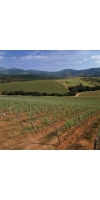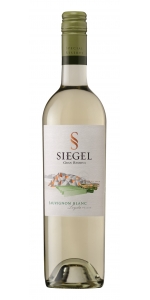Wine from Leyda Valley

The Leyda Valley is located in Chile just 55 miles West of Santiago. A fairly new growing area, established in 1997, the region was previously dedicated to barley and wheat. The Leyda Valley is a sub-region in the San Antonio Valley that was grated an independent appellation status thanks to the styles of wine that are produced. Influenced by the Humboldt Current, which flows from the West coast of the country to Antarctic, the Leyda Valley is located at a latitude of 33°, making it closer to the equator. The geography of the sub-region consists of rolling hills and is 600 feet above sea level. The clay soils lie over a granite base and receive moderate drainage. The fairly cool and dry climate caused man-made irrigation to become a necessity with water being brought in from the Maipo River. The project was made possible by four wealthy founders. Pinot Noir, Chardonnay, and Sauvignon Blanc were the first vines that were planted. Experimentation is still underway with Syrah, Gewurztraminer, Sauvignon Vern, and Riesling joining the original grape varieties. Today the sub-region has a total of 216 hectares with Sauvignon Blanc and Chardonnay thriving. The future of the region looks very promising, especially with the addition of Merlot.
Siegel Special Reserva Sauvignon Blanc Leyda is made from 100 percent Sauvignon Blanc
The grapes for the Gran Reserva wines are the product of a careful selection of Siegel's best vineyards in the Colchagua Valley, harvested by hand, and revealing a strong expression of the land.
The Gran Reserva wines represent the union of tradition and innovation in two generations. The grapes are sourced through careful selection of their best vineyards in the cool coastal Leyda Valley region. Siegel Gran Reserva Sauvignon Blanc offers a pale yellow color with green hues and reveals intense and complex aromas of grapefruit and pear accented by mineral notes. The palate is balanced and juicy with a vibrant acidity and a soft, lingering finish.
- back
Selected Options
Regions
Categories
Pricing
Countries
Regions
Grape Types
Wineries
Organic/Free Shipping
Chavy-Chouet Meursault Premier Cru Les Genevrieres is made from 100 percent Chardonnay.
Fruity flavors and typical nutty nuances. The Genevrières parcels are located in the heart of Meursault's southern premiers crus. "Genevrieres" takes its name from the presence, years ago, of the juniper bushes which covered its slope, and it is sometimes said that the tang of this aromatic berry can be detected in the wine.
The Genevrières parcels are located in the heart of Meursault's southern premiers crus. "Genevrieres" takes its name from the presence, years ago, of the juniper bushes which covered its slope, and it is sometimes said that the tang of this aromatic berry can be detected in the wine.
Fruity flavors and typical nutty nuances.
A balanced and memorable Chardonnay that starts with aromas of orangeblossom, Asian pear, crème fraiche, peaches and chamomile, complemented bynotes of toffee, honeysuckle, and graham cracker. On the palate, flavors of greenapple, Meyer lemon and stonefruit are finished with notes of tangerine and vanilla.This Chardonnay is smooth, creamy and balanced with a lingering acidity and a longfinish. This is the perfect wine to pair with a brie or gouda cheese plate drizzled withlocal honey and hazelnut.
Review:
Fruit is sourced primarily from the southern part of Napa Valley, and aged five months in French oak. With its billowy mouthfeel, the liquid seemingly floats above the palate. Lemon curd, daffodil, cinnamon toast, and creamy vanilla sandalwood are delicious and generous flavors. This is approachable luxury. - The Tasting Panel, July/August 2025
-Tasting Panel/Somm Journal 92 Points





